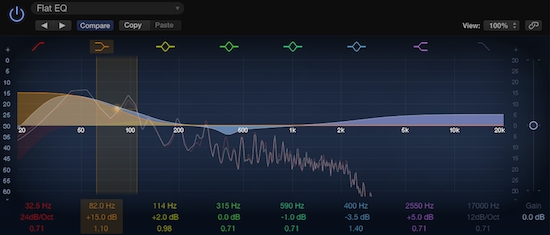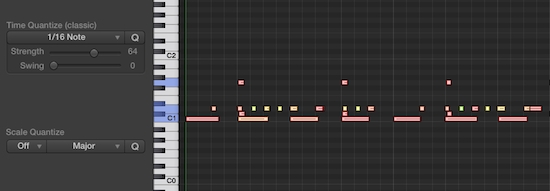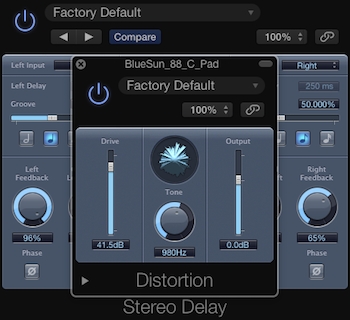
When first starting out in music production, as with any discipline, one of the best ways to learn is to follow the guidance of those with experience. Through imitating tried and tested techniques for ourselves, we begin to understand the inner workings of the process, making sense of each link in the chain.
This is a surefire educational method and one as old as the hills - it has however, one crucial weakness, in my humble opinion!
Too often, would-be producers come out of the curve thinking there’s just a single way to accomplish a certain goal. By slavishly adhering to the received wisdom, we can end up falling in line with what could be termed ‘the rules of music production’, never even considering there might be another way to do things.

Today, I want to take you through how a handpicked selection of producers have shattered a number of these rules in their work, yet have still managed to create music I for one consider to be great.
Before we start, I should point out that of course there are lots of great examples of music that do follow the rules I’m going to talk about ignoring below, but the idea is to open our ears and minds up to other ways of making music. Let’s begin!
Rule 1: Make Sure There's Lots Of Bass
My first example is a track from easily the best known musician of the bunch - Radiohead’s Thom Yorke. His first solo record, The Eraser, is packed full of oddball electronic gems, easily as distinctive as anything his famous band has recorded.
The track I want to discuss in particular is the title track and first in the album’s running order. Ostensibly a slice of subtly glitchy Dance or Electronica, it was when I listened to the track recently after some more classic examples of House that I first realised how light it sounds in comparison.
What I’m really referring to of course is the kick drum - typically, electronic music makes a priority of the kick drum sound, pushing it up front in the mix and taking great care to ensure it’s satisfyingly full and bass-drenched.
In The Eraser however, what’s striking is how short and light the kick drum sound is, yet it’s more than propulsive enough to drive the beat and song forwards.
Adding to this effect is the almost complete and total lack of a bassline - the piano chord riff is fairly low in register but in a more typical or conventional song, it would almost certainly be accompanied by some sort of bass guitar line or low synth pattern.

These production choices combine to give the track an airy feel that’s more than a match for Yorke’s breezy, falsetto vocals. So the next time you find yourself pumping up the gain on that low EQ shelf, it’s more than worth asking yourself if there might be another, lighter direction you might be able to take your song in.
Rule 2: Keep Your Drums In Time
Keeping your drums in time is a rule that doesn’t just restrict itself to electronic music, but is something observed across the genre spectrum. Just think of how many hours engineers have lost asking drummers for another take, or micro-editing sections of audio to make it better fit the given tempo. It makes you shudder!
Now, there are many great drummers out there who’ve laid down wonderfully musical beats that are almost perfectly in time, but that doesn’t mean that this is the only way we can do things.
My example to demonstrate the more wonky side of musical time keeping comes from a producer I’ve often mentioned in the pages of this magazine, Knxwledge. I find myself turning to his music again and again because I find it so utterly distinctive and compelling - there just isn’t anything else quite like it.
One of the primarily reasons for this is his unique approach to beat programming - here is a producer for whom the term ‘quantize’ is alien, choosing instead to loosely scatter out the hits across his drum patterns, creating a mesmerisingly relaxed feel.
Pretty much all of Knxwledge’s music is an example of this technique but the track I’ve chosen, OpinyunGayme, is a particularly good example. We hear the hi hats in isolation at the beginning of the track, falling and stumbling over each other as the kick and snare come into play. Hypnotic!
This doesn’t mean to say you can just throw your hits around the piano roll and expect listeners to enjoy the result - it takes taste and a keen sense of rhythmic feel to get it right but listening to more of Knxwledge’s music is a decent first step.

One method I like to use is to play in my beats loosely using a MIDI keyboard or MIDI pads, then apply just a percentage of quantization to the resulting pattern, e.g. 50%, rather than completely locking the notes into the given groove template.
This is possible in DAWs such as Logic Pro X, where the software will slide your recorded MIDI notes towards their strict grid positions but not all the way, should you choose. This typically leaves you with a result that sounds both human and in time.
Rule 3: All Vocals Must Be Intelligible
Another rule that transcends genre, making sure that your vocal track is clear, distinct and that the lyrics are comprehendible, is virtually sacrosanct in the world of music.
So it was with particular fascination that I listened to James Blake’s latest track, If The Car Beside You Moves Ahead, replete as it is with its stuttering, pitched, glitchy lead vocal.
Whilst Blake has made something of a name for himself by treating vocals in a less than conventional manner, this track takes things to a whole new level - it’s a captivating if disconcerting listen first time round, giving you the impression of someone having great difficulty communicating, albeit from another time and space!
By stripping back the rest of the production to the core essentials of a very basic beat and synth riff, Blake gives centre-stage to his warped voice, forcing the listener to pay attention and to try to make sense of what’s being sung.
It’s a brilliant subversion of typical practice in popular music and one that remains whirling around your head long after the track has finished.

To achieve something similar, you could try slicing your vocals into separate parts and swapping the sections around, as well as copying and pasting pieces and pulling them around the timeline. If you’re working with tempo-synched loops also, you could load them into a sampler and use a MIDI keyboard to rearrange the notes.
Rule 4: Don’t Repeat Things Too Many Times
Everyone knows that simply repeating something ad infinitum is beyond boring. It’s true that a great many musical styles are built around the concept of the loop, but almost always with the caveat that the loop will switch up with something else at some point during the track, or that it will build or develop in some way.
Indian producer Jitwam has other ideas however - he’s a bit of a leftfield musical thinker anyway, but the track Doooooooooooooooooo from his recent album selftitled, defies this rule by taking a short, jangling guitar sample and repeating it…for the entire track!
Of course, he brings in other samples over the top and his vocals lead the track along its duration, but the core of the production is that single, short sample, looping round towards the track’s conclusion. It’s a hypnotic effect that brings a meditative quality to the song.
Like all the musical examples I’ve picked here, on paper this tactic shouldn’t work but the skill and creativity of the producer transcends the need to follow the rules. That’s inspiration in my book!

Selecting the right sample is key here, as anything that doesn’t bear up to lots of repetition or create the right mood will quickly become jarring on the ear. Try slicing little sections out of songs, pre-existing loops or even your existing productions, loop them up and try to listen for a full minute - if the sound doesn’t become annoying after that time, you might be on to a winner.
Rule 5: Always Stay In Key
Breaking this next rule is another cardinal sin in the world of music composition - staying in key.
This is something that music students are taught across the globe - you are allowed to modulate and change key, but once a key has been established, take care to choose only notes that work in that particular harmonic context.
Well again, another producer leading the light on the fringes of popular and experimental sound, Vessel, isn’t too keen on that idea - his track Red Sex from his second album Punish, Honey, features a woozy central synth riff that barely sits still, snaking its way around the scale in arcing pitch bends.
Despite the glissandi, the riff does still impart an impression of the obvious key of the song for the most part, but around the midpoint of the track, the lead starts to do something different, deliberately jumping in and out of this given harmony to create a clashing, dissonant effect.
It sounds wrong to anyone who’s spent time learning their scales on an instrument, yet it’s entirely in keeping with the rough, raw aesthetic of the track overall. In short, another wonderful subversion of common music production etiquette!

As anyone who’s into Jazz knows, bum notes can be quickly normalised through careful repetition and even throw a soporific, trope-laden composition off into exciting, unchartered territory. So next time you hit that wrong key or note when recording something, maybe don’t press delete straight away and give the take another listen. It just might take you to an unexpectedly rewarding place!
Rule 6: Don't Overuse Your Effects
The last rule that I want to highlight is in fact something that I’ve often argued the case for in previous articles, namely don’t push your use of effects too far, or in other words, subtlety is best.
I still believe that a restrained approach to both composition and production is a great way to begin to think about making music but our theme here is rules were made to be broken, so I’ve chosen a mixtape that masterfully sends this advice crashing out of the window.
Arca’s &&&&& put him on the radar of many beatmakers, musicians and listeners alike, exploding as it seemed to from obscurity with very little descriptive information to accompany it - it’s a dizzying, ecstatic mix of different influences that nevertheless sounds as utterly unique and fresh today as it did back in 2013, when it was first dropped.
Many commentators described the music as having a grotesque yet beautiful quality, the former almost exclusively a result of Arca’s daringly heavy use of effects such as distortion, voice stacking and pitch-shifting.
Not all the rules go in the can of course - Arca’s strong use of effects is carefully balanced by his choice of instrumentation and arrangement, ensuring the music has a sense of space that prevents it from sounding overloaded or suffocating.

The next time you find yourself running out of inspiration for a particular track or idea, why not try pushing the delay feedback on those synths up to 98%, or the distortion on the drums to 30dB, it could just deliver the character you’ve been searching for!
Tear It Up
I hope the above musical examples have helped you to see that the common production practices that many musicians follow are not immutable laws that cannot be violated - they’re guidelines, there to be tested, prodded and, sometimes, turned upside down.
Try the above highlighted techniques out for yourself next time you’re stuck in a production rut or are in need of some inspiration, but don’t forget to experiment yourself - it’s how all the music above was arrived at after all!










